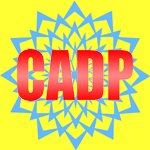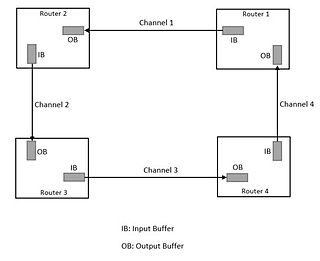 W
WIn computer science, concurrency is the ability of different parts or units of a program, algorithm, or problem to be executed out-of-order or in partial order, without affecting the final outcome. This allows for parallel execution of the concurrent units, which can significantly improve overall speed of the execution in multi-processor and multi-core systems. In more technical terms, concurrency refers to the decomposability property of a program, algorithm, or problem into order-independent or partially-ordered components or units.
 W
WAn augmented marked graph is basically a Petri net with a specific set of places called resource places. If removing these resource places and their associated arcs, it will become a marked graph where every cycle is marked. For each resource place, there are pairs of outgoing and incoming transitions connected by elementary paths.
 W
WCADP is a toolbox for the design of communication protocols and distributed systems. CADP is developed by the CONVECS team at INRIA Rhone-Alpes and connected to various complementary tools. CADP is maintained, regularly improved, and used in many industrial projects.
 W
WIn concurrent computing, a deadlock is a state in which each member of a group waits for another member, including itself, to take action, such as sending a message or more commonly releasing a lock. Deadlocks are a common problem in multiprocessing systems, parallel computing, and distributed systems, where software and hardware locks are used to arbitrate shared resources and implement process synchronization.
 W
WA Petri net, also known as a place/transition (PT) net, is one of several mathematical modeling languages for the description of distributed systems. It is a class of discrete event dynamic system. A Petri net is a directed bipartite graph that has two types of elements, places and transitions, depicted as white circles and rectangles, respectively. A place can contain any number of tokens, depicted as black circles. A transition is enabled if all places connected to it as inputs contain at least one token.. Some sources state that Petri nets were invented in August 1939 by Carl Adam Petri—at the age of 13—for the purpose of describing chemical processes.
 W
WA race condition or race hazard is the condition of an electronics, software, or other system where the system's substantive behavior is dependent on the sequence or timing of other uncontrollable events. It becomes a bug when one or more of the possible behaviors is undesirable.
 W
WReo is a domain-specific language for programming and analyzing coordination protocols that compose individual processes into full systems, broadly construed. Examples of classes of systems that can be composed with Reo include component-based systems, service-oriented systems, multithreading systems, biological systems, and cryptographic protocols. Reo has a graphical syntax in which every Reo program, called a connector or circuit, is a labeled directed hypergraph. Such a graph represents the data-flow among the processes in the system. Reo has formal semantics, which stand at the basis of its various formal verification techniques and compilation tools.
 W
WTLA+ is a formal specification language developed by Leslie Lamport. It is used to design, model, document, and verify programs, especially concurrent systems and distributed systems. TLA+ has been described as exhaustively-testable pseudocode, and its use likened to drawing blueprints for software systems; TLA is an acronym for Temporal Logic of Actions.
 W
WA routing algorithm decides the path followed by a packet from the source to destination routers in a network. An important aspect to be considered while designing a routing algorithm is avoiding a deadlock. Turn restriction routing is a routing algorithm for mesh-family of topologies which avoids deadlocks by restricting the types of turns that are allowed in the algorithm while determining the route from source node to destination node in a network.
 W
WA vector addition system (VAS) is one of several mathematical modeling languages for the description of distributed systems. Vector addition systems were introduced by Richard M. Karp and Raymond E. Miller in 1969, and generalized to vector addition systems with states (VASS) by John E. Hopcroft and Jean-Jacques Pansiot in 1979. Both VAS and VASS are equivalent in many ways to Petri nets introduced earlier by Carl Adam Petri.